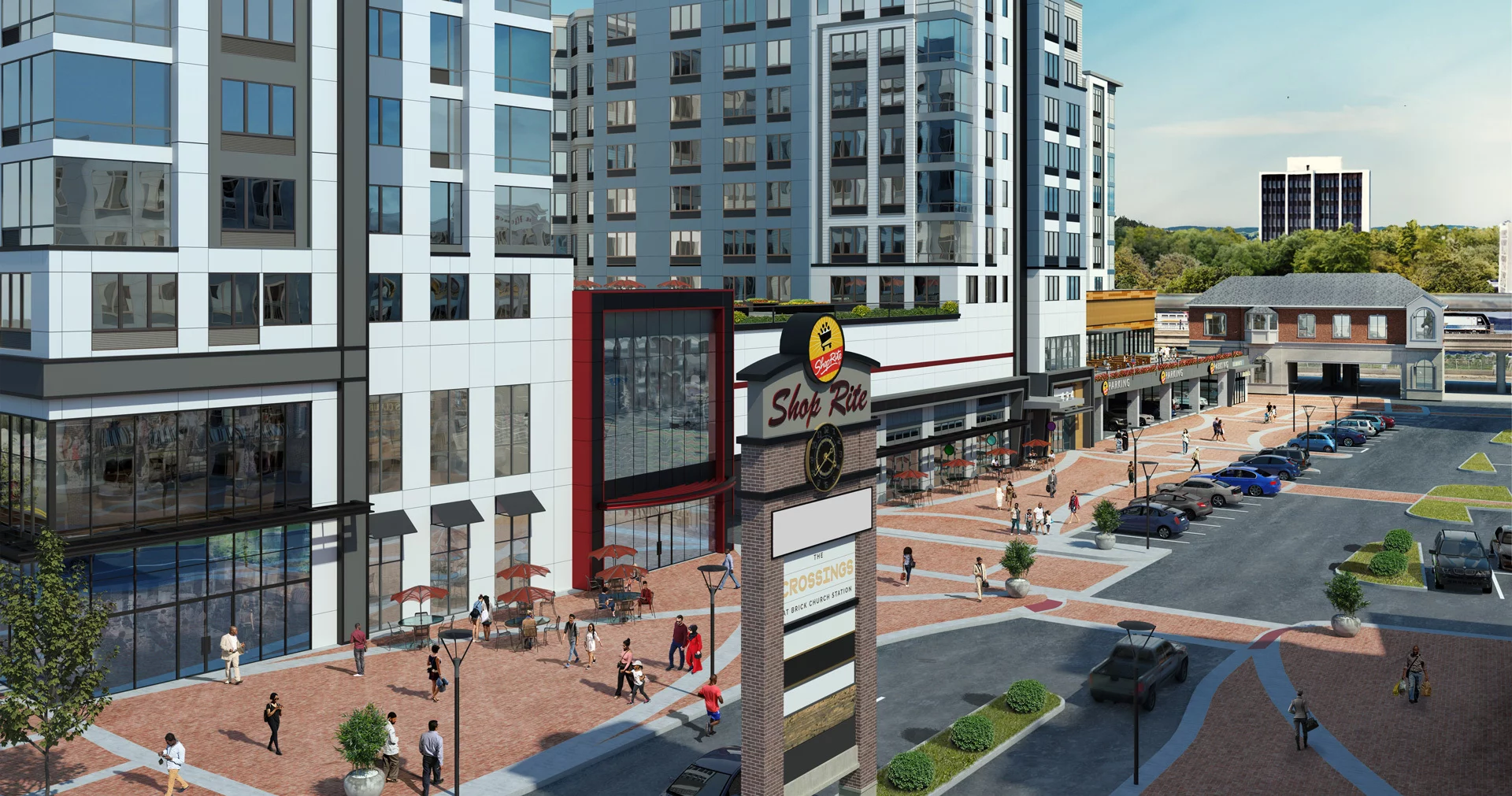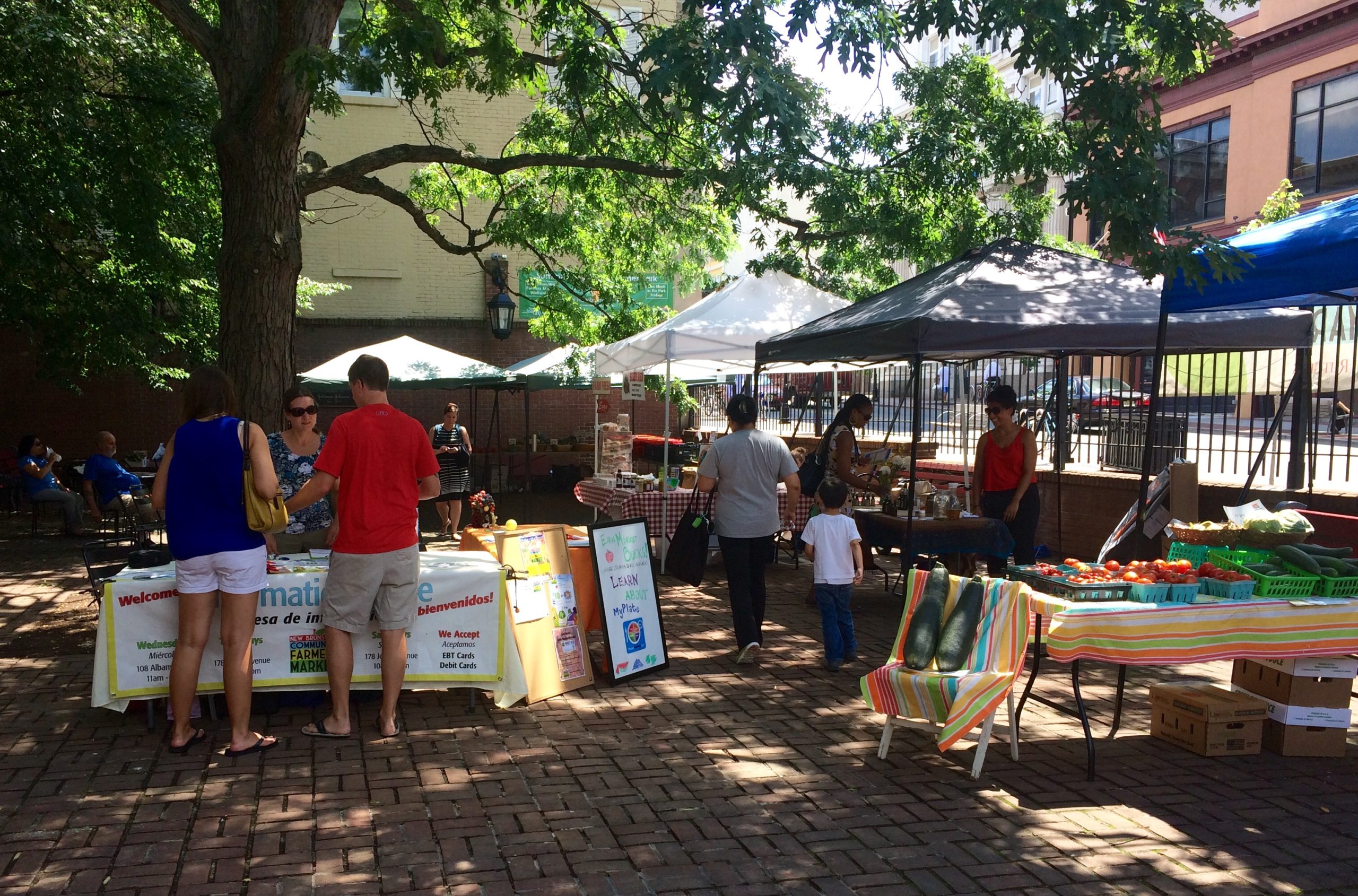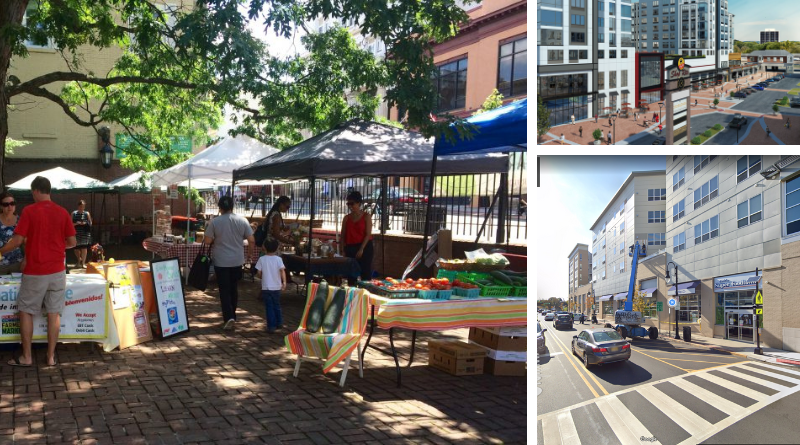Food access is integral to planning a transit-friendly community. While work trips are often considered, they make up only a small share of daily personal travel. According to the 2017 National Household Travel Survey, shopping and errands comprised the largest portion, at 38.4 percent of daily trips, compared to only 17.4 percent for work. For the work of planning (and building) transit-friendly places—places that are walkable, densely-populated, and that promote transit use—priority should be given to food accessibility. How residents in a transit-friendly place acquire their groceries can significantly affect their well-being as well as their travel behavior and habits.
Grocery access need not resemble the stereotypical gigantic supermarket set in a sea of parking. While many Americans may obtain food this way, this model is difficult to adapt to an urban setting, and, perhaps, unnecessary.
There is no one-size-fits-all solution to ensuring food access in a transit-friendly place. Instead, it can resemble a multifaceted network driven by planning and public policy initiatives, aligning to ensure that healthy food is within reach for all residents—without the requirement to use a car. This network can consist of small, walkable grocery stores and green grocers, healthy corner stores, and farmer’s markets, complemented by delivery services for some.
Traditional Grocery Store Development
The term “grocery store” might conjure images of a warehouse-type structure surrounded by parking lots. For example, the Stop & Shop directly adjacent to the North Elizabeth Station is roughly 47,000 sq. ft., with another 115,000 sq. ft. of parking.
In many urban settings, where real estate is at a premium, such development is often infeasible, as real estate prices clash with the need to provide parking and achieve a certain level of profitability.
The Super Foodtown in Bloomfield, NJ is located one block from the Bloomfield Rail Station on the Montclair-Boonton Line. Google Maps.
Still, some transit-friendly places in New Jersey have seen traditional grocery store development in recent years. For example, Whole Foods opened locations in Newark in 2016, and Metuchen in 2017. In Bloomfield, the Bloomfield Center redevelopment project incorporated a ground-floor Super Foodtown, in addition to other shops, apartments, and parking in a complex across from the NJ TRANSIT rail station. East Orange Plaza, located near the Brick Church rail station, is currently being redeveloped, with a plan to incorporate an existing ShopRite alongside 820 residential units. Known as The Crossings at Brick Church Plaza, the project is scheduled for completion in 2024.

Outside of this large-scale paradigm lies an existing food ecosystem in urban areas, consisting of smaller grocery stores, corner stores, as well as green grocers purveying produce. These decentralized nodes of food access can help support planning for dense, walkable, mixed-use neighborhoods through their size and versatility.
Small Nodes in a Network
The current method of measuring food access tends to favor places near supermarkets, rather than smaller stores. The New Jersey Economic Development Authority (NJEDA)’s recently-released Food Deserts Community Relief Map, designates food deserts in part based on lack of “proximity to larger supermarkets,” defined as food retailers “with at least 20,000 square feet of selling area.” In context, 20,000 sq. ft. is nearly eleven times the size of an average pharmacy (1,733 sq. ft. – NCPA 2017). Many designated Transit Villages, such as New Brunswick, Linden, Dover, Asbury Park, and Burlington, are assigned food desert status on the map, though this methodology omits the presence of smaller stores.
New Brunswick, which has struggled to support a full-scale supermarket in its downtown, has several smaller food stores nearby, on the French Street corridor. One of the small shops, New Brunswick Farmer’s Market, occupies nearly 5,000 sq. ft. Another across the street, Latino Supermarket, utilizes roughly 5,600 sq. ft. Both stores, neither of which provide parking, are around thirty times smaller than the suburban-style Stop & Shop in North Elizabeth.
Latino Supermarket on French Street in New Brunswick, NJ. Google Maps.
From a planning perspective, it may be optimal to work towards land use controls that permit (and promote) such small nodes. This typology enables residents in nearby neighborhoods to walk a short distance to get groceries, and, if implemented across an entire municipality, could dramatically reduce the need to drive to obtain food.
Toward Healthier Corner Stores
Some small grocery stores, as well as more convenience-oriented corner stores, can elicit concerns related to healthy food quality and access. Especially in lower-income areas, there is a need to ensure that such stores are equipped to provide nutritious food to adjacent communities. Often, “Grabbing a bag of chips is more convenient than grabbing fresh fruit,” as De’Sean Weber, a Fellow with the Congressional National Hunger Center, writes in the Jersey City Healthy Corner Store Toolkit. “The limited availability of healthy, affordable food can lead to serious health problems and is a growing concern throughout Jersey City.” To address this, successful initiatives have been developed in Pennsylvania and New Jersey.
The Pennsylvania-based Food Trust, along with the Philadelphia Department of Health, began the Healthy Corner Store Initiative in 2004, to partner with corner store owners to “improve healthy food access in underserved communities” (The Food Trust). Staff screened corner stores as potential partners according to criteria based on size (defined as being less than 2,000 sq. ft. and having four or fewer aisles), as well as SNAP (Supplemental Nutrition Assistance Program) or WIC (Special Supplemental Nutrition Program for Women, Infants, and Children) certification. The program’s ladder of engagement ranged from $100 to incentivize a handful of healthy inventory changes, to a robust Healthy Corner Store certification, which involved new equipment, training, inventory, and advertising. The Healthy Corner Store Initiative is considered a success, growing to over 630 participating stores by 2012, with research showing growth in consumer demand for healthy foods, as well as higher property values in neighborhoods near participating corner stores.
In New Jersey, the state’s Healthy Corner Store Initiative works similarly, with incentives for inventory changes, new marketing materials, nutrition education, and coupons. A 2015 program evaluation identified success in this iteration of the program, tallying over 100 participating stores across 19 municipalities, and over 500 new healthy products on shelves.
The geometry of small-scale grocery stores works well in dense urban settings, though the presence and quality of healthy options can be potentially lacking. At the municipal level, however, Healthy Corner Store Initiatives can help to surmount this challenge by using a variety of incentives to increase nutritious alternatives. Such a program, in combination with dispersed, small establishments, could provide the foundation for sustainable, equitable food access in a transit-friendly place.
Fostering Farmer’s Markets
In addition to small grocery stores, green grocers, and city-scaled supermarkets, farmer’s markets can provide a supplemental food resource for urban residents. In New Brunswick, for example, the farmer’s market is a seasonal, weekly pop-up in a plaza one block from the train station. For those living in high-rises downtown, or nearby neighborhoods, the presence of a fresh produce node close to transit and employment centers creates an additional opportunity for easy food access. Many farmer’s markets, including New Brunswick’s, accept SNAP/EBT cards, WIC checks, and Seniors Farmer’s Market Nutrition Program (SFMNP) checks, ensuring that low-income residents can obtain fresh fruit and vegetables. While not a primary solution to groceries in a transit-friendly place, farmer’s markets can be another complementary part of the food-access network.

Grocery Delivery Services
For some, grocery delivery is a way to eliminate the need to travel to get food. While grocery delivery is, today, primarily conducted by carbon-emitting trucks, in some dense areas, such as New York and Jersey City, it is conducted via electric bike. In the long term, as vehicles transition to battery electric power, curbside management may be a chief concern.
In a space-limited streetscape, effective curbside management works to ensure safe, efficient circulation through the space. Especially in an urban setting, many parked delivery vehicles can jam a street, obstructing traffic flow. An effective management strategy for a highly frequented frontage might involve specialized parking restrictions, dedicated loading areas, planning to ensure continued safe circulation, and adequate enforcement. Curb Appeal: Curbside Management Strategies for Improving Transit Reliability, from the National Association of City Transportation Officials (NACTO), provides guidance and best practices.
Healthy Foods in Transit-Friendly Places
It is easy to conceive of grocery shopping as involving a drive and a large supermarket, but this is not always the case. In many urbanized areas, including in New Jersey, it is possible to regularly obtain quality groceries without the need for a car. Transit-friendly planning and policymaking can promote this style of access through continued Healthy Corner Store Initiatives, and tailored zoning that allows for small mixed-use retail without parking minimums.
Future transit area planning should account for how residents will obtain food—whether by walking, biking, a short bus ride, or through delivery. A robust food system for an urban place is dispersed, decentralized, and enables consumers to choose how and where they get their food. The hallmark of a truly transit-friendly place should be the ability to obtain groceries without the need to drive—potentially reducing total Vehicle Miles Traveled considerably and improving quality of life and health outcomes for community members.

